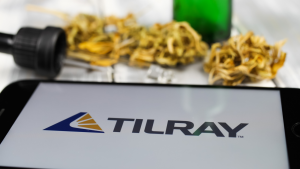
Many of yesterday’s meme stocks, once the favorites of speculative traders, now sit forgotten at the bottom of portfolios, their potential for massive gains long gone. The popular sentiment — “It’s only a loss if you sell” — offers little comfort in this scenario.
Reinforcing the sentiment that meme stocks’ heyday is long past, many former meme stock favorites like WeWork, Smile Direct Club, and Bed Bath & Beyond are delisted. A few holdouts remain, teetering on the brink of penny stock territory and struggling to maintain credibility.
But some meme stocks are bucking the wider trend. Despite the Federal Reserve’s economic tightening over the past few years, some meme stocks are poised for a potential rebound due to sector-specific tailwinds and speculation about “imminent” rate cuts.
Nevertheless, banking on such uncertain prospects is risky, especially given the Fed’s “higher for longer” stance. Instead, if you’re looking for meme stocks to buy, prioritize those with a clear, viable path to commercialization or, at least, unique market differentiators.
Oklo (OKLO)

Oklo (NYSE:OKLO) may be one of the most speculative meme stocks on the market. Still, if it even approaches its ambitious goals, it could prove the decade’s biggest winner among alternative energy stocks. While the company’s plans include widespread deployment of small-scale nuclear energy sources, Oklo is approaching the problem from an angle others aren’t: using experimental “fast reactors” to create safer and more efficient nuclear plants.
Oklo stands out from other nuclear stocks because it is rapidly set to break ground on its first plants. The company secured a site permit in 2019 and already has access to reactor fuel, licensing, and permits to build the plant, which it expects to bring online by 2030.
As expected from any R&D-centric meme stock, Oklo is deeply in the red as a pre-revenue venture. Still, with limited debt and the backing of Silicon Valley’s top names — including Chairman Sam Altman of OpenAI fame and industrial investment powerhouse 8090 Industries — Oklo’s near-term future is all but secured as it races toward a new era of sustainable energy.
Tilray Brands (TLRY)

Momentum is finally building among cannabis stocks as the U.S. Drug Enforcement Administration shifts its stance towards rescheduling cannabis to a Schedule III substance. Tilray Brands (NASDAQ:TLRY) is the top pick among former meme stocks on this news. Shares surged nearly 40% before falling back to earth, but with its current price under $2 per share, there’s considerable growth potential.
Tilray’s appeal goes beyond cannabis. As the country’s fifth-largest craft brewer, the company’s diversified portfolio strengthens its market position. Its craft brewery operations, including production, marketing, and distribution networks, set Tilray apart from many undifferentiated competitors.
Firstly, selling craft beers allows Tilray to diversify its revenue streams in the low-margin cannabis industry without overextending. Secondly, these established distribution networks will be invaluable when cannabis legalization becomes more widespread. Tilray is already market-testing THC-infused drinks in Canada, positioning the company to quickly roll out these products nationally as legalization progresses.
Root (ROOT)

Root (NASDAQ:ROOT) shares more than quadrupled since January, bucking the wider downward trajectory of most meme stocks. The digital insurance provider, which focuses on auto, renters, and homeowners markets, owes its success to its innovative use of AI to assess client risk and optimize premium pricing based on real-time driving data. This approach has significantly improved its risk management and loss reduction capabilities.
Root’s impressive performance began following its year-end report, which revealed a 31% increase in gross written premiums, reaching $783 million, despite a slight 1% decline in gross earned premiums to $636 million. The company also halved its net losses to $147 million, marking its best year. This turnaround led analysts at Jefferies to quadruple their price target and praise Root for steering towards profitable growth and scalability.
The market has embraced Root’s advancements, with the stock soaring 491% since the start of the year, even as it dipped slightly in recent weeks. Although Root is still on its path to full profitability, its undeniable momentum makes it a standout in the digital insurance sector and a top contender among meme stocks.
On the date of publication, Jeremy Flint held no positions in the securities mentioned. The opinions expressed in this article are those of the writer, subject to the InvestorPlace.com Publishing Guidelines.
On the date of publication, the responsible editor did not have (either directly or indirectly) any positions in the securities mentioned in this article.




